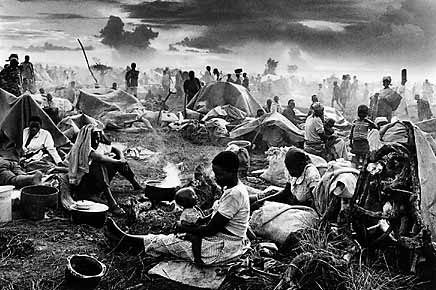Sebastiao Salgado
Sebastiao Salgado is a photographer who was born
on February the 8th, 1944 in Brazil. He became a photographer in
the 1970's, he is well known for his photographs including poverty, famine, industrialization
and political oppression, his main experty and the thing he is most famous for
is photojournalism in which he has won many different awards, he was influenced
by other photojournalists such as Lewis
Hine, W. Eugene Smith and Walker Evans. Aside from being a photographer
Sebastiao Salgado is also a UNICEF ambassador.
A book Sebastiao Salgado is well known for is
a book called Workers: archaeology of the Industrial age, in this book
Sebastiao Salgado focuses on work from the Stone Age up to
the industrial age to the present day; it is mixed up into 6 parts Agriculture,
Food, Mining, Industry, Oil and Construction. The books main focus is the
carelessness and the poor working conditions all types of civilization
worked/work in. He also hasn't just focused on one part of the
world he has focused on many different places such as Sahel and South America.







Another book he has produced and is very well known is
a book called Migrations, this book was published in the year 2000 and is
simply what it says in the title, the book includes 7 years of photographs
which focus on migrants moving from one place to another, it includes 35 and
people migrating from many different places he hasn’t just focused on one group
of migrants. Like workers all the photos are taken in black and white i think
this is because like
the books workers it exaggerates the dullness if the conditions they were in were
positive then I feel there would be a use of colour. I feel he has
also just used black and white because it shows the simplicity and tell the viewer that
the things you can see the migrants with is all they have. in both these books
he has taken his photographs in a lot of different angles and styles, although
in works there are a lot more close up shots compared to the book migrants I
think this is because he wants there to be a bond between the viewer and the
worker but with the migrants there are a lot of wide angle shots and longs
shots which produce a very noise photo, I think this is because he wants to
show how small the migrants are and how nobody is noticing them enough to help.








No comments:
Post a Comment